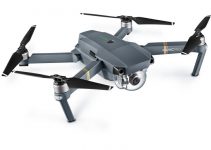If you are reading 4K Shooters, you are likely unsurprised by the notion that mirrorless cameras have become strong competitors to cinema cameras when it comes to video quality. Among the latest hits is the Canon EOS R5 whose flagship spec of 8K raw video caught nearly everyone’s attention. Sure, overheating may be a concern (these still aren’t cinema cameras), but the image quality is not.
ProAV TV has been doing extensive testing of the R5 and felt it was important to see how it compared to the C300 Mark III when it comes to imaging. Carl Yates is taking the lead here and admits that the C300 is obviously a better cinema camera based on design, but wants to see how the R5’s codecs and video hold up in real-world use.
Kicking things off is how the cameras deal with over and underexposure. A simple setup with color chart and model is used for this and both cameras are equipped with a Sigma 85mm T1.5 Lens.
The “main” recording mode is used for each camera, which for the C300 is XF-AVC All-I in C-Log2 and for the R5 it is internal standard 4K (to avoid overheating) in All-I with C-Log. Both cameras have 10-bit 4:2:2 sampling.
Immediately you can see the differences in sensor size, as at the same settings the R5 has a shallow depth of field. The C300 uses the same focal length and is moved back to match framing.
Then, they start to turn up the brightness. Both cameras do a great job, but the C300 seems to do better once we hit 3 stops over with the background holding on to a little more detail. It’s still close.
Moving on to underexposure the difference is huge. The R5 has tons of terrible chroma noise just a couple stops under while the C300 still has a workable, if messy, image.
Yates points out this is from the differences in dynamic range as the C300’s Dual Gain Output (DGO) sensor is vastly superior to the R5’s more conventional full-frame sensor.
How about raw? Bumping up into the R5’s 8K RAW and the C300’s 4K RAW we see improvements to both. There is loads of detail to be found and the extra resolution is brilliant.
Unfortunately, the highlight detail still appears to clip in the R5 at the same point. Underexposure reveals a completely different image, however, as the green noise has effectively gone away. The other benefit is raw footage is easier to apply noise reduction to in post. Still, the C300 performs better again here.
For a true high ISO test Yates moves to a color chart test and starts adjusting the shutter speed to balance changes in ISO. For best quality, the R5 is set to its 4K HQ mode while the C300 returns to its XF-AVC settings.
Downsampling in the R5 should help minimize noise. Moving up through the settings they do surprisingly good up to ISO 6400 and not half bad at ISO 25600. The R5 does seem to gain an edge here as its downsampling is a huge advantage as finer noise is less impactful.
Now for sharpness. A basic bookcase test with some charts should do the trick. The C300 again sticks with its XF-AVC mode while the R5 cycles through its modes.
With 8K RAW, the R5 does deliver much more detail thanks to the extra resolution—not that the C300 is a slouch. We see the 4K HQ mode of the R5 also has more detail. However, the regular 4K mode on the R5 is much worse than the C300.
A side note is that changing the frame rate doesn’t seem to hurt detail, as both the R5 and C300 maintained practically the same image quality up to 4K at 120 fps.
Yates declares the C300 Mark III the winner without question. The traditional cinema camera wins in dynamic range, delivers more detail in its standard operation (R5 has overheating in its more advanced modes), and better low-light performance for general use. Still, the R5 is a great hybrid camera and can deliver outstanding video quality in 4K HQ and 8K.
Considering there is now the C70 effectively splitting the difference between the C300 Mark III and R5 there are more implications with this test, especially as people may be making a tough decision between the R5 and the C70.
[source: ProAV TV)
Order Links:
- Canon EOS R5 Mirrorless Camera (B&H, Amazon)
- Canon EOS C300 Mark III Cinema Camera (B&H)
- Sigma Cine 85mm T1.5 FF High Speed Prime Lens (B&H)
Disclaimer: As an Amazon Associate partner and participant in B&H and Adorama Affiliate programmes, we earn a small comission from each purchase made through the affiliate links listed above at no additional cost to you.


